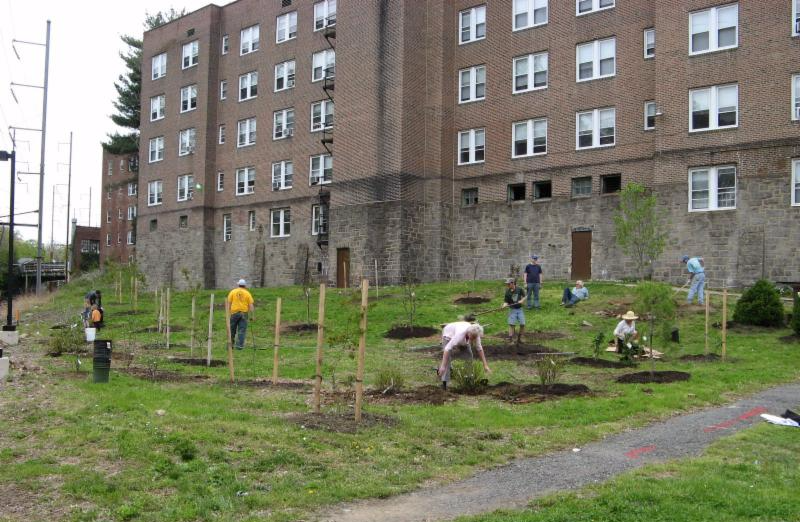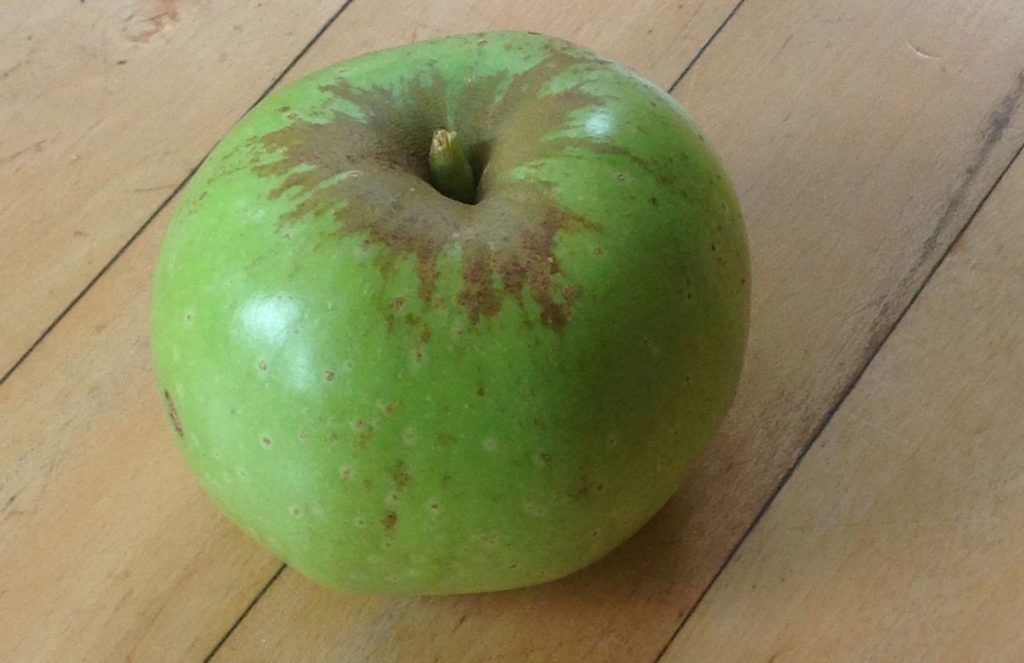A Short History of the Tulpehocken Garden and Orchard
(written by WCGN garden committee)
In years gone by, those who rode SEPTA’s Chestnut Hill West Regional Rail Line learned to recognize the Tulpehocken stop not by the sign on the station building but by the fact that for over thirty years the grounds around the historic station building had been a dump—a feral cat sanctuary and a tangle of junk trees, weeds (including poison ivy), logs, mattress inner springs, disabled appliances, tires, and fencing from previous garden plots now unrecognizable. It was even the proverbial “farm” to which unwanted pets are sent: there was a suitcase containing the remains of a dog!

Enter West Central Germantown Neighbors Association (WCGN), the Philadelphia Orchard Project (POP), and SEPTA managers Ed Wallace and Wendy Harvey-Green: the place rapidly and spectacularly changed starting in 2013. SEPTA provided encouragement and a large dumpster, WCGN provided the manpower, and POP provided both fruit trees and expertise. There were donations from TreePhilly, McFarland’s Tree Service, and generous individuals. Also important has been a nearby apartment house, which is supplying irrigation water until SEPTA can establish water service to the station.
With continued community support the site is now pristine, planted in grass and clover and decked with native trees and shrubs as well as healthy, ever-maturing fruit trees and berry bushes. Thanks to POP, we even sport our very own ‘Tulpehocken’ apple tree.

In 2015, buoyed by success, WCGN applied for and was awarded a modest grant from Germantown United Community Development Corporation for the purpose of designing and planting one or more pollinator beds in the orchard (as recommended by POP). Soon a collection of native perennials, carefully selected to provide bloom throughout the growing season, will not only support insect life and enhance fruit tree pollination but will grace the site with masses of colorful flowers to delight the senses from spring through autumn.
The only danger is that commuters from Center City may fail to recognize their stop and end up at Upsal or beyond!